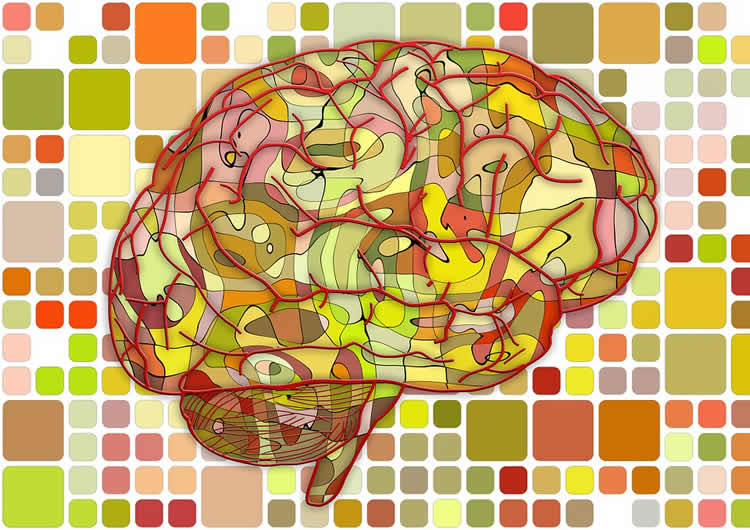Summary: Researchers trace the Pavlovian response to a small cluster of neurons in the striatum.
Source: UCLA.
Same neurons malfunction in Parkinson’s, Huntington’s and Tourette syndrome.
In his famous experiment, Russian scientist Ivan Pavlov rang a bell each time he fed his dogs. Soon, the dogs began drooling in anticipation when they heard the bell, even before food appeared.
Now, a UCLA study has traced the Pavlovian response to a small cluster of brain cells — the same neurons that go awry during Huntington’s disease, Parkinson’s disease and Tourette’s syndrome. Published March 22 in the journal Neuron, the research could one day help neuroscientists find new approaches to diagnosing and treating these disorders.
“Species survive because they’ve learned how to link sensory cues like specific sounds, smells and sights to rewards like food and water,” said Sotiris Masmanidis, the study’s senior author and an assistant professor of neurobiology at the David Geffen School of Medicine at UCLA. “We wanted to uncover the brain circuitry that encodes reward-based learning and behavior.”
The UCLA team focused on cellular activity in the striatum, a part of the brain associated with reward, movement and decision-making.
In a modern version of Pavlov’s experiment, Masmanidis and colleagues repeatedly exposed mice to the unfamiliar scent of banana or lemon, followed by a drop of condensed milk. Eventually, the mice learned that the fragrances predicted the arrival of a sweet reward and began fervently licking the air in anticipation.
“The mice learned to associate the new scent with food, just like Pavlov’s dogs,” said Masmanidis, who is also a member of UCLA’s California NanoSystems Institute and Brain Research Institute. “Our next step was to uncover what happens to the Pavlovian response when we silence different groups of cells in the striatum.”

Based on clues from earlier studies, the team zeroed in on a tiny group of cells that support the principal neurons in the striatum. Although these supporting players comprise fewer than 2 percent of the cells in the region, the scientists were surprised to discover that they play a disproportionately important role.
“When we switched off the support cells, the mice licked the air in anticipation of the milk only half as often as normal,” Masmanidis said. “We suspect that the support cells enhance the brain circuits that encode Pavlovian response.”
The support cells’ influence appeared strongest when the mice were first learning to pair the unfamiliar scents with a reward. The change was less dramatic in mice who had already mastered the connection.
“These cells were most essential to inexperienced mice who hadn’t yet mastered the Pavlovian response,” Masmanidis said.
The findings suggest that malfunctioning support cells could lead to neurological disorders, and that restoring the cells’ function could eventually help people with these diseases.
More than a century after Pavlov’s classic study, there is still much to learn about Pavlovian responses. “Our findings open up exciting opportunities for further studying the roles of different types of neurons in health and disease,” said joint first-author Kwang Lee, a UCLA postdoctoral researcher in neurobiology.
The paper’s other co-authors are joint first-author Sandra Holley, Justin Shobe, Natalie Chong, Carlos Cepeda and Michael Levine, all of UCLA.
Funding: The study was funded by the McKnight Endowment Fund for Neuroscience, the National Institute on Drug Abuse, the National Institute of Neurological Diseases and Stroke, and the National Science Foundation.
Source: Elaine Schmidt – UCLA
Image Source: NeuroscienceNews.com image is credited to Boston University Medical School Center for Biomedical Imaging.
Video Source: The video is credied to UCLA Health.
Original Research: Abstract for “Parvalbumin Interneurons Modulate Striatal Output and Enhance Performance during Associative Learning” by Kwang Lee, Sandra M. Holley, Justin L. Shobe, Natalie C. Chong, Carlos Cepeda, Michael S. Levine, and Sotiris C. Masmanidis in Neuron. Published online March 22 2017 doi:10.1016/j.neuron.2017.02.033
[cbtabs][cbtab title=”MLA”]UCLA “Study Identifies Brain Cells Involved in Pavlovian Response.” NeuroscienceNews. NeuroscienceNews, 22 March 2017.
<https://neurosciencenews.com/pavlovian-brain-cells-6277/>.[/cbtab][cbtab title=”APA”]UCLA (2017, March 22). Study Identifies Brain Cells Involved in Pavlovian Response. NeuroscienceNew. Retrieved March 22, 2017 from https://neurosciencenews.com/pavlovian-brain-cells-6277/[/cbtab][cbtab title=”Chicago”]UCLA “Study Identifies Brain Cells Involved in Pavlovian Response.” https://neurosciencenews.com/pavlovian-brain-cells-6277/ (accessed March 22, 2017).[/cbtab][/cbtabs]
Abstract
Parvalbumin Interneurons Modulate Striatal Output and Enhance Performance during Associative Learning
Highlights
•Examined PV cell function with large-scale neural recordings and optogenetics
•Suppressing or over-activating striatal PV cells reduces projection neuron firing
•A disynaptic inhibitory circuit couples PV cells to projection neurons
•The influence of PV cells on striatal output and behavior declines with experience
Summary
The prevailing view is that striatal parvalbumin (PV)-positive interneurons primarily function to downregulate medium spiny projection neuron (MSN) activity via monosynaptic inhibitory signaling. Here, by combining in vivo neural recordings and optogenetics, we unexpectedly find that both suppressing and over-activating PV cells attenuates spontaneous MSN activity. To account for this, we find that, in addition to monosynaptic coupling, PV-MSN interactions are mediated by a competing disynaptic inhibitory circuit involving a variety of neuropeptide Y-expressing interneurons. Next we use optogenetic and chemogenetic approaches to show that dorsolateral striatal PV interneurons influence the initial expression of reward-conditioned responses but that their contribution to performance declines with experience. Consistent with this, we observe with large-scale recordings in behaving animals that the relative contribution of PV cells on MSN activity diminishes with training. Together, this work provides a possible mechanism by which PV interneurons modulate striatal output and selectively enhance performance early in learning.
“Parvalbumin Interneurons Modulate Striatal Output and Enhance Performance during Associative Learning” by Kwang Lee, Sandra M. Holley, Justin L. Shobe, Natalie C. Chong, Carlos Cepeda, Michael S. Levine, and Sotiris C. Masmanidis in Neuron. Published online March 22 2017 doi:10.1016/j.neuron.2017.02.033






